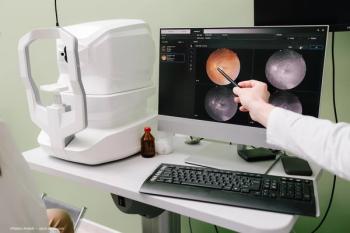
KAIST announces new microbe development for lutein production
Key Takeaways
- KAIST developed a microbial strain for efficient lutein production, offering an eco-friendly alternative to traditional methods.
- Corynebacterium glutamicum's metabolic pathways were modified to accelerate lutein production, achieving 1.78 grams per liter in 54 hours.
KAIST researchers unveil a new microbial strain for efficient, eco-friendly lutein production.
Researchers at the Korea Advanced Institute of Science and Technology (KAIST) announced the development of a safe, high-yield microbial strain capable of more efficiently producing lutein compared to conventional methods.1
Lutein is an antioxidant known particularly to prevent age-related macular degeneration (AMD) and cataracts. Conventional methods of obtaining lutein include extraction from marigolds or microalgae, which is often slow, costly and challenging to industrialize due to limited resources. KAIST’s new approach offers an eco-friendly and scalable alternative.1
A study led by Lee Sang-yup of the Department of Chemical and Bimolecular Engineering was published in the journal Nature Synthesis and demonstrated the potential of microbial metabolic engineering to mass-produce valuable health-related compounds using sustainable processes.1
“This research overcomes the production bottlenecks in microbial lutein synthesis and establishes a competitive, eco-friendly process,” Eun Hyun-min, a doctoral student and co-first author of the paper, said in a press release. “We expect this to help accelerate the practical use of microbial platforms for producing various natural compounds.”
Focusing on Corynebacterium glutamicum, a microorganism widely recognized as safe for food and pharmaceutical use, and applying a technique known as electron channeling KAIST modified the strain’s internal metabolic pathways. This modification accelerated the chemical reactions needed to produce lutein.
Optimizing enzyme arrangement and enhancing electron transfer allowed the KAIST research team to achieve a production rate of 1.78 grams per liter in 54 hours. This translates to an average of 32.88 milligrams per liter per hour, which significantly outperforms conventional extraction methods.
Researchers used glucose to feed the microbe. Glucose, a common and renewable sugar source, not only enhanced production efficiency, but it also supported a more sustainable manufacturing process.1
“Microbial metabolic engineering is emerging as a next-generation strategy that goes beyond traditional plant-based or chemical synthesis,” Sang-yup said in a press release. “We will continue researching ways to produce high-value natural substances more efficiently using microorganisms.”
South Korea’s Ministry of Science and ICT funded the work as part of a national initiative. Sang-yup’s startup, Silico Bio, is expected to commercialize the technology.
Reference:
Park Sae-jin. KAIST team develops microbe for efficient, eco-friendly lutein production | AJU PRESS. AJU PRESS. Published July 13, 2025. Accessed July 14, 2025.
https://www.ajupress.com/view/20250713153815898
Newsletter
Don’t miss out—get Ophthalmology Times updates on the latest clinical advancements and expert interviews, straight to your inbox.













































